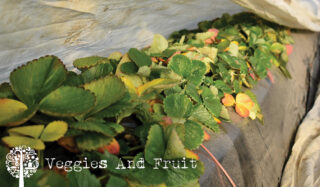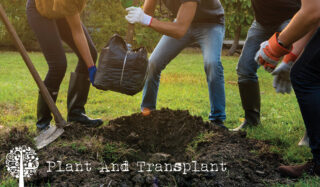February Is The Perfect Month To Give Your Garden Some Love
Valentine’s Day is coming, so why not show the garden some love? In some parts of the world, crocus and snowdrops are already heralding warmer weather, indicating that it’s not too early to do a few things to help Mother Nature jumpstart spring!
Start Seeds
Get out the seed trays! Remember, timing matters. Some seeds take longer to germinate, and each region has a different last frost date. Read the seed packet to see how many weeks it will take for the plants to get to the optimal size for planting out in the garden, and sow accordingly.
A porous seed mix and trays with good drainage prevent the seeds from getting soggy and rotting. I put my seed trays on a bright indoor windowsill, but if you have a greenhouse or garage, they’re also great places.

Use a grow light on a timer to mimic night and day. A great trick I’ve learned is to place a heating pad on the lowest setting underneath the seed trays to keep them warm and speed up germination. Keep the trays misted with water and the soil damp to the touch.
Prune
February is a good month for pruning. Group 3 clematis gets a hard prune to the first set of healthy buds, while Group 2 clematis only needs to be shaped, as its flowers will come off the old growth.
Prune wisteria by removing the shorter shoots to just two buds. Don’t forget about grapevine; cut off as much old wood as possible to make room for this year’s harvest, which grows off the new wood.

You can clip ornamental grasses down to the ground before new growth starts. And towards the end of the month, give roses a hard prune to encourage new growth and bushy plants.
Veggies And Fruit
Cover outdoor ever-bearing strawberries to warm the plants and encourage an early crop. Mulch around the base of perennial vegetables such as rhubarb and asparagus with an excellent organic-based compost; this will also help warm the soil and get them off to a healthy start.

General Clean-Up
Remember in the fall how deadheading and cutting back the foliage on the perennials didn’t happen? By leaving it, the plant roots stayed warm all winter, and the spent leaves and other debris provided great hibernation spots for the garden’s insect workers. In addition, some of the leaves acted like compost, adding microbial activity to the soil and enriching it.

Toward the end of the month, as the days warm up, start cleaning up last year’s perennials. You will be surprised at how lush the soil around the plant is and how many new shoots are already showing because you didn’t remove the spent foliage in the fall.
Plant And Transplant
If the ground can be worked at the end of February, transplant deciduous trees and shrubs. Plant primulas in a container on the porch or patio. This way, protecting them from the rain or an unexpected cold snap is easy.
Hellebore is blooming, and aphids are hatching. Keep an eye on the underside of the leaves for any signs of an infestation, and treat the infection with a homemade insecticide (baking soda, garlic, dish soap, and vinegar).

In the southern hemisphere, in places like New Zealand, autumn and winter vegetable seeds such as broccoli, kale, and cabbage are being sown.
No matter where you live, Mother Nature is slowly transitioning from one season to the next. Giving the garden a little love now will make that transition much better for the plants and the gardener.
Join me next month as we grow together!




